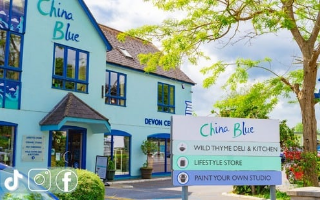That’s the thorny question Teignbridge District Council’s Planning Committee will wrestle with when they consider a proposal for a 2.5-megawatt gas-fired power plant on a site near the Dainton Business Park at Heathfield to guard against power blackouts.
A report to the committee suggests that such a temporary power plant, whilst fuelled initially by gas, could actually help speed up the transition to green alternatives as our primary source of energy.
Teignbridge’s leaders have declared a Climate Emergency and a strong preference for environmentally friendly power sources. Planning Committee now faces balancing those priorities against the case for gas as a short-term backup fuel to save the district’s homes and businesses from power cuts.
Teignbridge has received 197 letters of objection – including one from Bovey Tracey Town Council – plus 10 letters of representation and 1 letter of support. Many of the objections express concerns about the impact of burning fossil fuels, a preference for carbon-neutral power and perceived conflict with the council’s declaration of a Climate Emergency.
The report, prepared by officers after careful comparison of the pros and cons within Planning Policy, describes why such a power plant might be needed until such time as fossil fuels can be wound down as a source of electricity generation in the race to create a resilient low-carbon network.
More electricity:
It details how our very need for MORE electricity to charge our cars and other vehicles, instead of diesel or petrol-powered engines, is just one of several reasons why the existing network may struggle to cope in the next few years, making a local standby power plant advisable.
The proposed ‘Urban Reserve’ generator would be similar in scale to two shipping containers stacked one above the other – around 12 metres long, 2.4 metres wide and up to 7 metres high.
The report says: “In order to transition the electricity network to a low-carbon system, there is a need to move away from high carbon-intensive technologies in favour of lower-carbon options; in the UK this has predominantly been new solar and wind farms. However, both solar and wind power generation are weather dependant”.
The report notes that gas-fired generators can be ‘temporary’, bridging the gap between traditional and renewable energy generation until either new technology provides alternative grid support solutions or renewable energy generation/storage methods have enough capacity to make them obsolete.
Such generators are containerised and so can be readily replaced by similar small-scale units fired for example by hydrogen – if/when that technology is suitably advanced.
Match supply to demand:
The Committee on Climate Change’s report ‘Net Zero’ (May 2019) details that electricity systems need to match electricity supply to demand in real-time. As more weather-dependent sources of electricity come online, matching supply to demand can become more challenging. Given important roles for electrification in both transport and heat, electricity demand will rise in most areas, it says.
Teignbridge’s planning officer report mentions a number of appeal decisions that have gone in favour of such power plants.
Officers also highlight other issues that need to be carefully considered before making a decision on the proposal. These include:
Sustainability, impact on neighbouring homes, impact on the open countryside, impact on ecology, biodiversity and trees, highway safety and land drainage and flood risk issues
The report ends with a recommendation that, although finely balanced, the principle of development is acceptable and so permission should be granted, subject to a number of conditions.
The Planning Committee meets on Tuesday 18 February at 10.00 a.m.

You can join us on our social media pages, follow us on Facebook or Twitter and keep up to date with whats going on in South Devon.
Got a news story, blog or press release that you’d like to share or want to advertise with us? Contact us


























